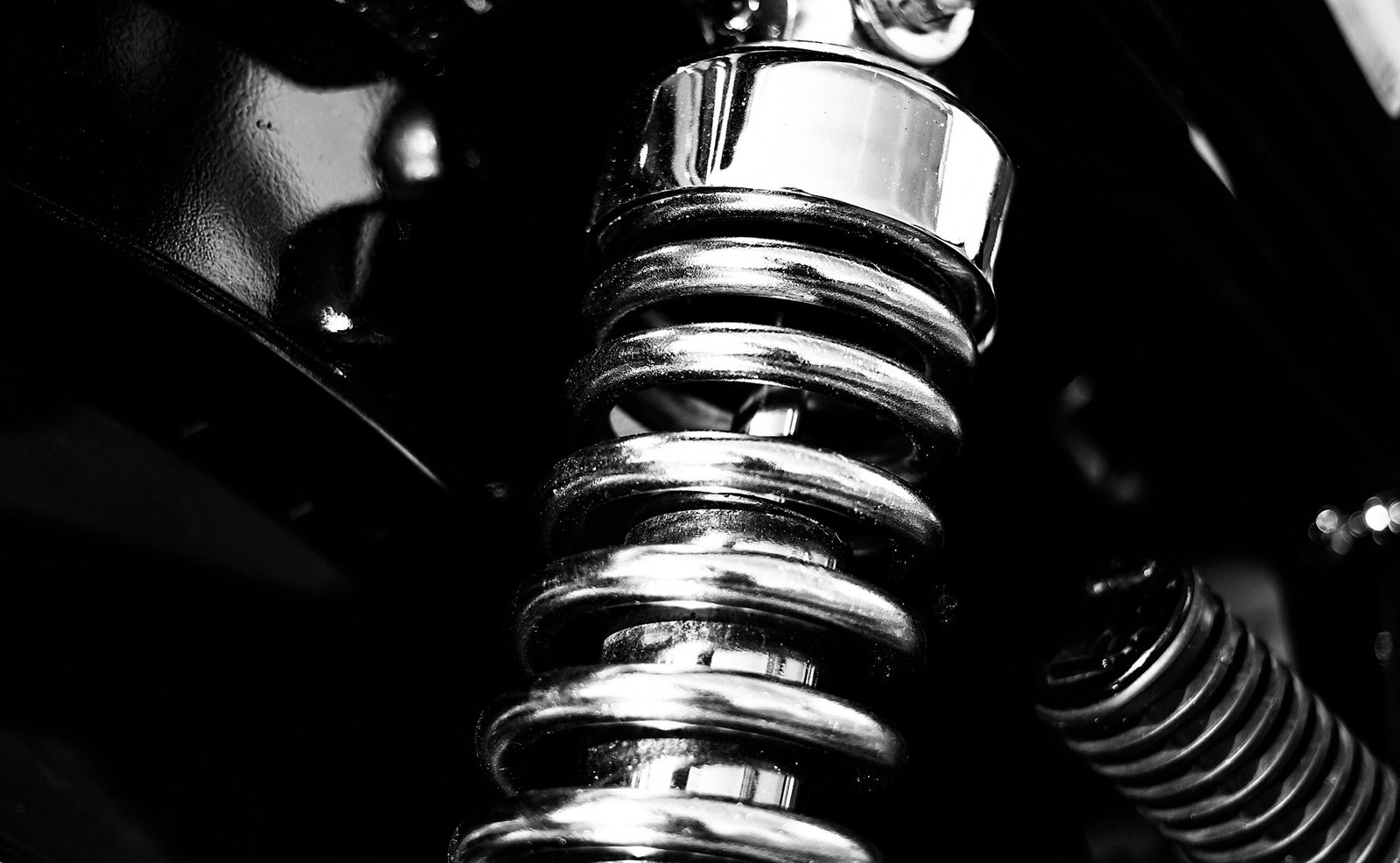Introduction to Tire Pressure and Fuel Efficiency
Tire pressure is a critical factor influencing not only the performance of a vehicle but also its fuel efficiency. Proper tire inflation plays a significant role in ensuring that a vehicle operates optimally, affecting both how much fuel is consumed and how the vehicle handles on the road. When tires are adequately inflated, there is less rolling resistance, which in turn reduces the amount of energy required to propel the vehicle forward. This means that the engine has to work less hard, leading to improved fuel economy.
Conversely, under-inflated tires can substantially decrease fuel efficiency. When the tire pressure is lower than recommended levels, the tires deform more as they roll, creating additional drag on the vehicle. This increased resistance can result in a noticeable drop in miles per gallon, making it more costly to operate the vehicle over time. Regular checks of tire inflation are essential, as tire pressure can fluctuate due to temperature changes, wear, or even natural leaks. Maintaining the correct tire pressure not only helps in conserving fuel but also enhances overall vehicle safety.
Further, proper tire inflation contributes to the longevity of the tires themselves. Tires that operate at the right pressure experience less wear and tear, extending their lifespan and postponing the need for replacements. Moreover, well-inflated tires provide better traction, reducing the risk of accidents caused by loss of control. Thus, ensuring that tire pressure is consistently checked and maintained is vital not just for fuel efficiency, but also for the safety of the vehicle and its occupants. The synergy between tire pressure and fuel economy underscores the importance of this often-overlooked aspect of vehicle maintenance.
Understanding Tire Pressure: The Basics
Tire pressure refers to the amount of air that is inflated within a tire, which plays a vital role in a vehicle’s overall performance and safety. It is typically measured in PSI, or pounds per square inch, a unit representing the force exerted by the air within the tire. Proper tire pressure is crucial not only for ensuring safety on the road but also for optimizing fuel efficiency.
The recommended tire pressure for various vehicle types can vary significantly depending on several factors, including the vehicle’s weight, tire size, and intended usage. Manufacturers provide specific tire pressure guidelines that can usually be found in the owner’s manual and on a sticker located inside the driver’s side door jamb or under the fuel filler cap. These guidelines are based on extensive testing and engineering to achieve the optimal balance between performance, safety, and fuel efficiency.
Under-inflated tires can lead to increased rolling resistance, negatively affecting fuel economy. Conversely, over-inflated tires can compromise traction and lead to uneven tire wear. Therefore, maintaining the correct tire pressure is essential for vehicle owners. It is advisable to regularly check tire pressure, particularly before long trips or when weather conditions change, as fluctuations in temperature can also impact air pressure within tires. A good rule of thumb is to check tire pressure at least once a month and prior to any significant travel.
Furthermore, it is important to note that tire pressure should be checked when tires are cold, as heat generated from driving can increase the internal air pressure, leading to inaccurate readings. By understanding the basics of tire pressure and adhering to manufacturer recommendations, drivers can enhance their vehicle’s performance, ensure safety, and improve fuel efficiency.
The Science Behind Fuel Efficiency
Fuel efficiency fundamentally refers to the distance a vehicle can travel per unit of fuel consumed. Several factors contribute to a vehicle’s fuel consumption, which includes vehicle weight, aerodynamics, engine efficiency, and notably, rolling resistance—the friction between the vehicle’s tires and the road surface. Understanding these components is essential for elucidating how tire performance affects fuel efficiency.
Vehicle weight plays a critical role in fuel efficiency calculations. Heavier vehicles require more energy to accelerate and maintain speed, which in turn increases fuel consumption. Consequently, maintaining optimal tire pressure is essential since under-inflated tires increase the overall weight supported by the vehicle, leading to greater rolling resistance. This can cause engines to work harder and, therefore, consume more fuel.
Aerodynamics also significantly influences fuel efficiency, especially at higher speeds. Vehicles engineered with streamlined designs experience less air resistance, allowing for more efficient movement. However, impaired tire performance resulting from incorrect tire pressure can disrupt the vehicle’s natural aerodynamics, further exacerbating fuel consumption rates. Proper tire inflation helps maintain the intended shape of the tires, providing optimal contact with the road for enhanced stability and reduced drag.
Rolling resistance is perhaps the most direct connection between tire performance and fuel efficiency. It is defined as the energy loss when a tire rolls over a surface, largely dictated by tire characteristics and inflation levels. When tires are properly inflated, they deform minimally, resulting in reduced rolling resistance, which subsequently improves fuel efficiency. Conversely, low tire pressure increases rolling resistance, leading to higher energy demands from the engine and, thus, greater fuel usage.
In understanding these fundamental principles, it becomes clear that tire maintenance, particularly concerning tire pressure, is not merely a matter of safety but also a significant factor that can directly influence fuel efficiency.
Effects of Underinflated Tires on Fuel Efficiency
Underinflated tires have a significant adverse effect on fuel efficiency, primarily due to the increase in rolling resistance. When a vehicle’s tires are not inflated to the recommended pressure, they generate more friction with the road surface. This heightened resistance requires the engine to exert additional energy, leading to a notable uptick in fuel consumption. Studies indicate that for every 1 psi loss in tire pressure, fuel efficiency can be reduced by approximately 0.2% to 0.4%. As a result, maintaining proper tire pressure is critical not only for safety and performance but also for optimal fuel economy.
The National Highway Traffic Safety Administration (NHTSA) has reported that underinflated tires can decrease fuel economy by 0.2% for every psi drop in the average pressure of all tires. Given that American drivers typically operate vehicles with underinflated tires, this loss translates to higher fuel costs. It is estimated that more than 25% of cars on the road have tires that are significantly below the manufacturer’s recommended pressure, leading to an average increase of 3% in overall fuel expenses.
Effects of Overinflated Tires on Fuel Efficiency
Maintaining proper tire pressure is essential for achieving optimal fuel efficiency in any vehicle. While it might seem counterintuitive, overinflating tires can have detrimental effects on fuel efficiency, ride comfort, and overall vehicle handling. When tires are inflated beyond the manufacturer’s recommended pressure, they become stiffer and less capable of conforming to the surface of the road. This can lead to a reduced contact area between the tire and the pavement, which may initially appear to enhance fuel efficiency due to lower rolling resistance. However, this stiffening comes at a cost.
Firstly, the overinflation of tires adversely affects ride comfort. With increased pressure, tires offer less cushion against road imperfections, leading to a harsher ride. Passengers may experience increased vibration, potentially resulting in discomfort during longer journeys. Furthermore, an uncomfortable ride can distract the driver, leading to decreased attentiveness on the road, which could indirectly impact fuel efficiency through inefficient driving behavior.
Another critical aspect to consider is the impact on traction. Overinflated tires may struggle to maintain adequate grip, particularly in wet or slippery conditions. This lack of traction can cause the vehicle to slip or skid, forcing the driver to make adjustments that can lead to erratic acceleration and braking patterns. Such driving behavior not only diminishes overall fuel efficiency but also poses safety risks.
Lastly, vehicle handling can be compromised. Overinflated tires may cause the vehicle to feel “floaty” or less stable during turns, which can lead to oversteering or understeering scenarios. This unpredictability forces drivers to exercise greater caution and, in some cases, change their driving patterns, ultimately leading to inefficient fuel consumption. Optimizing tire pressure within the manufacturer’s recommended range ensures a harmonious balance between comfort, traction, and fuel efficiency.
Maintaining Optimal Tire Pressure: Best Practices
Maintaining optimal tire pressure is crucial for ensuring both vehicle safety and fuel efficiency. Regular checks are essential, and it is recommended to assess tire pressure at least once a month and before long journeys. Tire pressure often fluctuates due to temperature changes; consequently, it is wise to measure pressure when tires are cold, preferably before the vehicle has been driven. This ensures more accurate readings, as friction caused by driving can artificially increase tire pressure.
Inflating tires to the manufacturer’s suggested pressure level, which can typically be found in the vehicle’s manual or on a sticker located inside the driver’s door, is vital. When inflating tires, use a reliable air compressor. Many service stations have air pumps available, but it is prudent to ensure that their settings are accurate and functioning properly. For personal use, investing in a good-quality tire inflator can offer convenience and reliability.
A reliable tire pressure gauge is an important tool in tire maintenance. These gauges are available in digital and analog forms, and each type has its own advantages. A digital gauge provides quick and precise readings, while a dial-type gauge offers simplicity and ease of use. It is recommended to invest in a gauge that fits comfortably in your hand and is easy to read. Regularly calibrating your gauge ensures accurate measurements over time.
Seasonal changes also play a significant role in tire pressure maintenance. During colder months, the air within tires contracts, leading to decreased pressure. Conversely, warm weather can lead to an increase in tire pressure due to the expansion of air. Being mindful of these changes and adjusting the tire pressure accordingly can help optimize fuel efficiency and prolong tire life. By applying these best practices, drivers can ensure their vehicles operate efficiently and safely.
How Tire Pressure Affects Other Aspects of Vehicle Performance
Maintaining optimal tire pressure is crucial not just for enhancing fuel efficiency but also for ensuring overall vehicle performance and safety. When tire pressure is too low, tires can become under-inflated, which adversely affects handling and vehicle stability. This condition can lead to a deterioration in the driver’s ability to control the vehicle, significantly impacting response times during critical maneuvers such as lane changes or emergency stops.
Properly inflated tires ensure that the vehicle maintains consistent and predictable handling characteristics. This is particularly important during adverse weather conditions, where the grip provided by tires is essential for safety. Low tire pressure can increase the risk of hydroplaning on wet surfaces or skidding on icy roads, putting drivers and passengers at risk. Conversely, over-inflated tires can lead to a harsher ride and reduced tire traction, creating similar safety concerns.
Moreover, tire pressure has a significant impact on braking performance. When tires are maintained at the recommended pressure levels, braking distances are shortened because the contact patch—the area of the tire that makes contact with the road—is optimized. This improved contact not only helps in achieving better stopping power but also aids in ensuring that the vehicle remains stable during braking, further enhancing safety.
In addition to safety and handling, proper tire pressure contributes to tire durability. Under-inflated tires experience increased flexing, leading to higher temperatures and potentially greater wear, which can result in tire blowouts. Maintaining the correct tire pressure can prolong the lifespan of the tires, reducing the frequency of replacements and providing cost savings over time.
In essence, while fuel efficiency is a foundational reason for monitoring tire pressure, it is equally important to recognize its broader implications on vehicle performance, safety, and overall durability.
Common Myths About Tire Pressure and Fuel Efficiency
Tire pressure is often surrounded by a host of misconceptions that can lead to poor maintenance decisions. One prevailing myth is that the recommended tire pressure is merely a suggestion. In reality, adhering to the manufacturer’s guidelines is critical for optimal performance. Under-inflated tires not only diminish fuel efficiency but also lead to uneven tire wear and reduced handling capabilities. Consequently, this can create safety concerns while driving.
Another common belief is the notion that over-inflating tires provides better fuel savings. While it may seem logical that firmer tires reduce rolling resistance, over-inflation can adversely affect traction and lead to a harsher ride. It also increases the risk of tire blowouts, especially in hot weather conditions. Proper tire pressure, as specified by the vehicle manufacturer, offers the best combination of safety and efficiency.
Many drivers assume that checking tire pressure is only necessary when a warning light is illuminated. However, tire pressure can fluctuate due to various factors such as temperature changes and driving conditions. Regular checks, ideally once a month, can help maintain the recommended pressure throughout the year. This proactive approach not only boosts fuel efficiency but also extends the lifespan of the tires.
There is also a misconception that all vehicles require the same tire pressure. In fact, each vehicle type has individual specifications based on its design, load capacity, and intended use. Therefore, it is imperative to consult the vehicle’s owner manual or information placard for accurate pressure recommendations.
By debunking these myths, car owners can better understand the importance of maintaining the correct tire pressure. This knowledge not only contributes to improved fuel efficiency but promotes safer and more economical driving practices.
Conclusion: The Importance of Tire Management for Fuel Efficiency
Maintaining the correct tire pressure is a vital aspect of vehicle management that significantly impacts fuel efficiency and overall vehicle performance. Properly inflated tires not only ensure optimal contact with the road but also contribute to improved handling and safety. When tires are inflated to the recommended pressure levels, they create less rolling resistance, which can lead to better fuel economy. Research indicates that under-inflated tires can reduce fuel efficiency by up to 3% for every 1 psi drop in pressure. This underlines the importance of regularly checking tire pressure to avoid unnecessary fuel expenses.
In addition to fuel savings, maintaining proper tire pressure plays a crucial role in vehicular safety. Incorrectly inflated tires can lead to decreased traction, longer stopping distances, and an increased risk of tire blowouts. Regular tire maintenance, including pressure checks, ensures that drivers can mitigate these risks while driving, enhancing their overall driving experience. Furthermore, correctly maintained tires can extend their lifespan, thus reducing replacement costs and minimizing environmental impacts.
To promote better fuel efficiency and ensure safer driving, vehicle owners should adopt a proactive approach to tire management. This includes routinely checking tire pressure, rotating tires regularly, and inspecting tread depth. Drivers are encouraged to consult the vehicle manufacturer’s specifications for tire pressure and adhere to these guidelines. By taking these simple yet effective steps, car owners can enhance their vehicle’s performance, save on fuel costs, and contribute positively to road safety.
In conclusion, effective tire management is essential for maximizing fuel efficiency and overall vehicle performance. By prioritizing the maintenance of tire pressure, individuals can ensure a more economical and safer driving experience.



